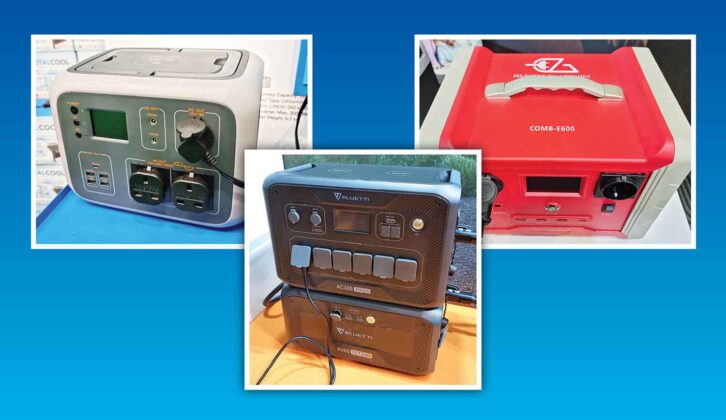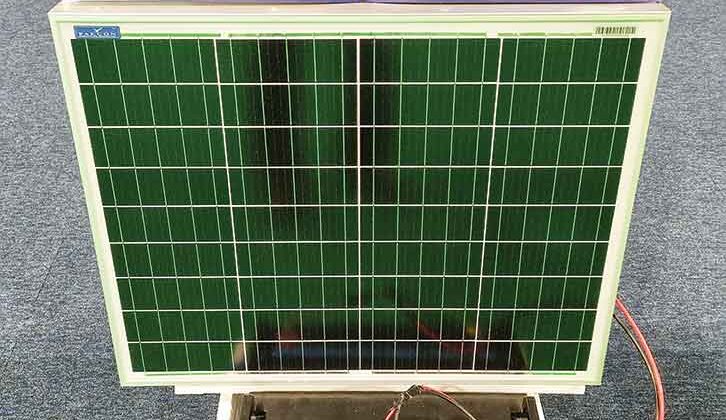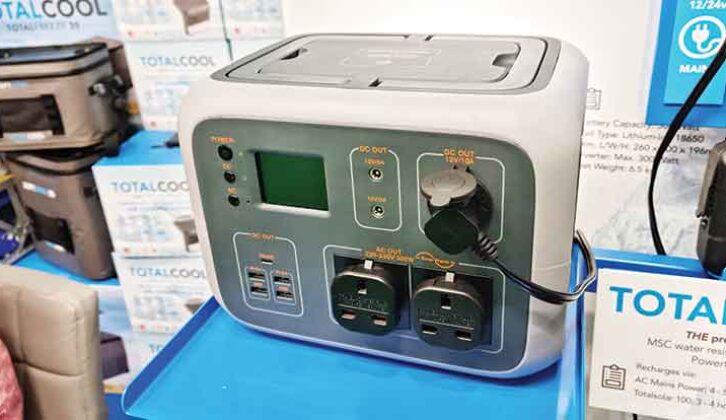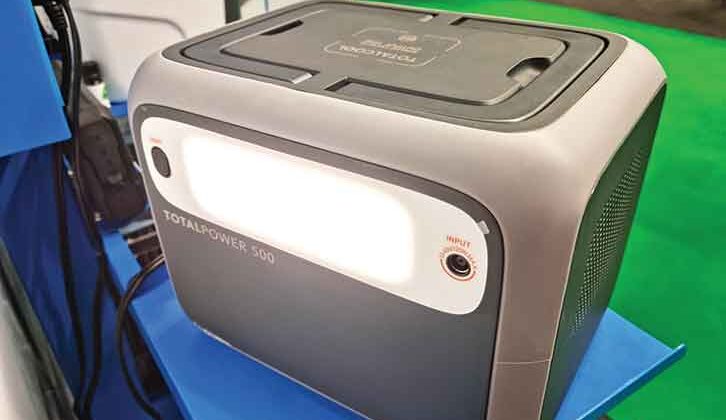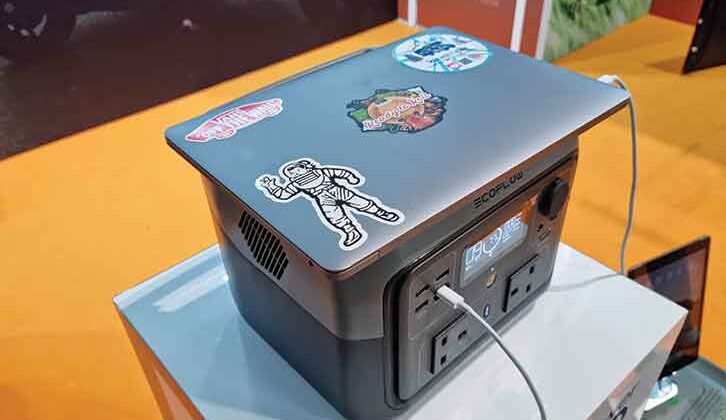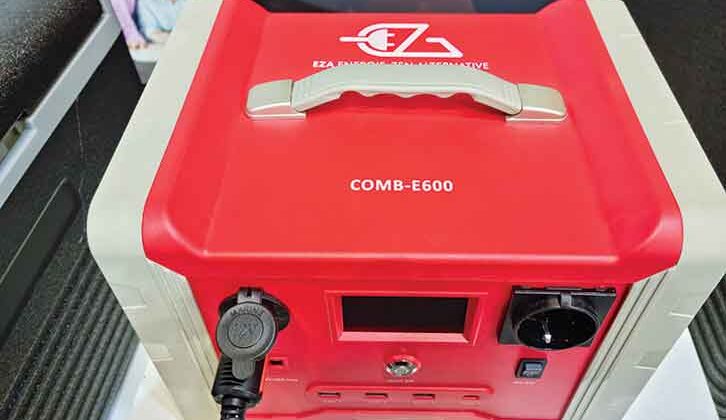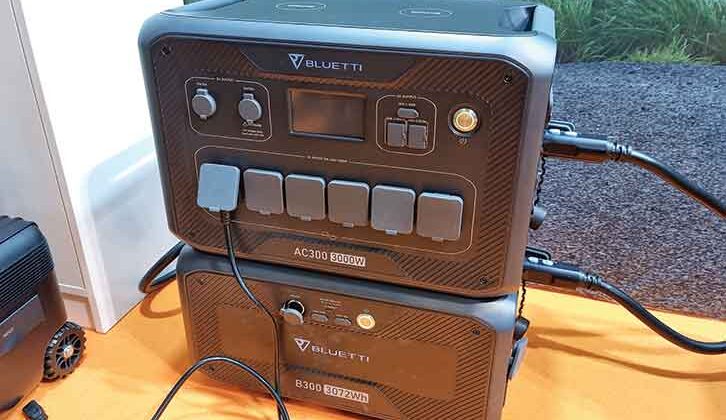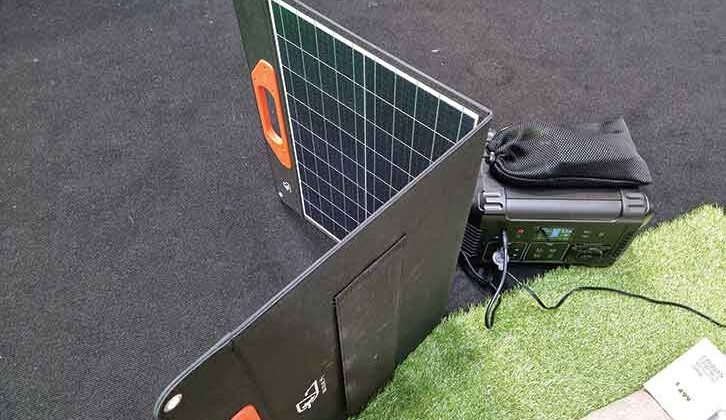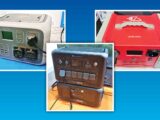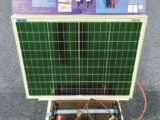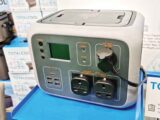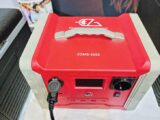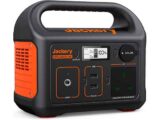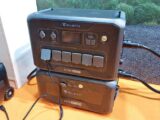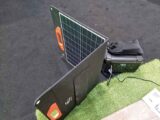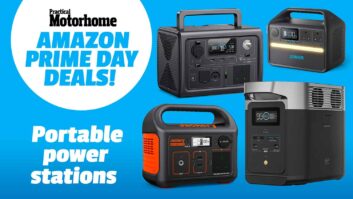Portable power stations have really taken off recently – for many who post online, they’re a must-have item that promises to transform your motorcaravanning life. But what exactly are portable power stations – and do you need one?
The first point to bear in mind is that, over the years, brands (and see our best motorhome manufacturers to find out more about them) have refined their products to the point where the modern vehicle is a pretty powerful bit of kit, which can generally offer you at least a weekend’s camping on its built-in battery power.
If you find yourself in need of more off-grid capability, the cheapest way to achieve this is simply to double or triple your battery bank.
However, power banks are still very popular – so what are they all about?
Practical Motorhome is supported by its audience. When you purchase through links on our site, we may earn an affiliate commission. Learn more
What is a power bank?
A portable power station doesn’t replace the motorhome’s electricity source, but is designed to be used as a standalone all-in-one box, which usually features an inverter (so you can have 240V mains power), several 12V and USB sockets, all powered from an internal battery. The amount of power that you can have will depend very much on the size of your power bank’s internal battery.
The internal battery is usually a small lithium iron phosphate unit, which has the benefit of being able to be drained down to a low level without damage, while still maintaining constant voltage. The best motorhomes are already fitted with these types of batteries and they are an excellent choice for a leisure battery.
Some power bank models also link to folding solar panel systems, such as the Jackery Solar Generator 1000, while others are modular, allowing you to easily add more battery power to the power station should you need it.
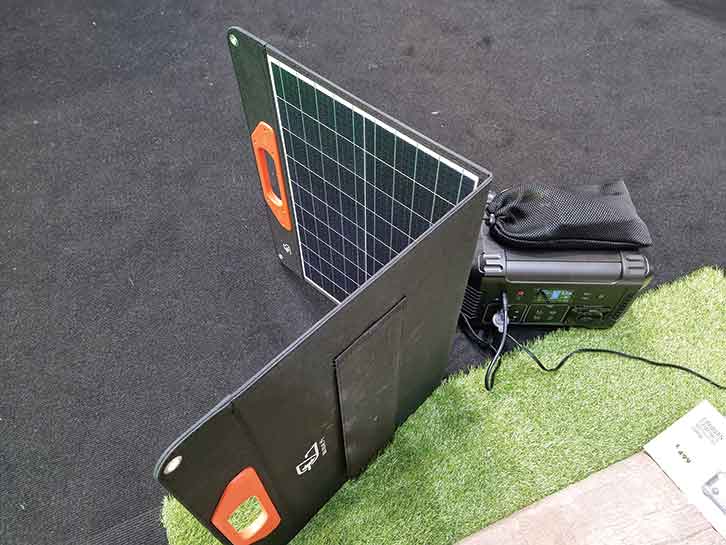
The key point to be aware of here is that the size of the internal battery determines every aspect of the unit; while your motorhome might have a large battery bank of 100-200Ah,
for a battery bank to be portable and compact, they will usually use much smaller battery packs.
Larger power banks do offer much longer running times for electrical equipment, but they’re bulky and heavy, making them trickier to handle and taking up storage space and payload.
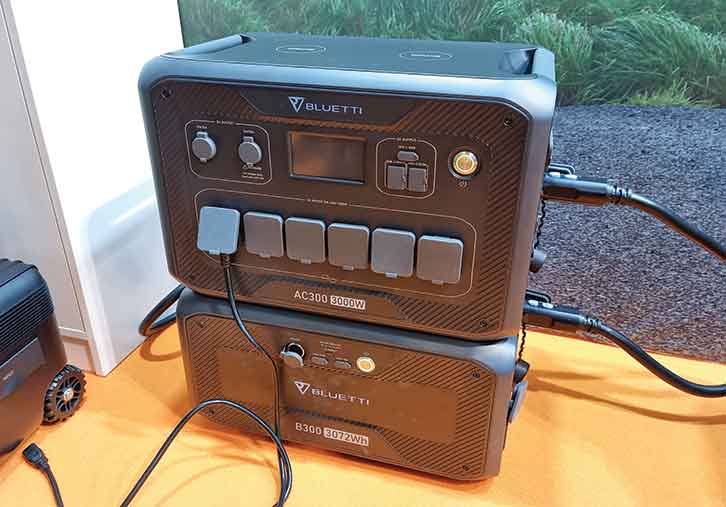
What can they power?
One of the most common themes relating to power supplies is that many people struggle to envisage the amount of power that certain items need.
For example, a domestic electric kettle is around 3000W. To power it from your leisure battery or power station, you’d need a 3000W continuously rated inverter, which would consume about 250A in use. That’s enough power to drain a 100Ah battery in minutes and is the sort of current that you can weld metal with.
There’s no way a portable power station could power that. Nor would you want it to, with that amount of current flowing around.
So realistically, you’ll want to only be using power banks with low-powered electrical items that are under 500W in total. Generally speaking, anything that heats, cools or has a motor will be a heavier consumer of power.
Microwaves, air-conditioning units and heaters are the heaviest electrical consumers of all. Here is a rough idea of the power draw of some common motorhome items:
- USB fan 5W
- Fairy lights 10W
- Mobile phone trickle charger 10W
- Mobile phone fast charger 40W
- Laptop 45W
- CPAP machine 60W
- Electric bike charger 80W
- High-power laptop (gaming or video editing) 250W
- Fridge 250W
- Sandwich maker 1000W
- Inverter and air fryer 1500W
- Inverter and coffee machine 1500W
- Inverter and fan heater 1500W
- Inverter and microwave 3000W
What features do they have?
Almost all power stations feature a built-in inverter linked to at least one 240V socket, and various USB and USB-C sockets, together with 12V sockets. Many now provide a variety
of 12V outputs for powering all sorts of electrical equipment remotely.
Some also have a wireless charging panel for mobile devices and built-in lighting, making them ideal for use in a motorhome awning or tent.
Some models are modular and you can clip on extra battery units if you need more power. So they’re quite flexible for adding electricity to a location remote from mains power.
If you want to power delicate electrical items, such as a coffee machine, laptop or medical equipment, it’s essential to look for a unit with a pure sine wave inverter. These smooth the electrical current and will work with most 240V electrical equipment.
A modified sine wave inverter is entirely different and far cheaper than a pure sine wave model – and can potentially make delicate equipment malfunction. If in doubt, always go for a pure sine wave inverter, because it is far more compatible with a wide range of electrical equipment.
When shopping around for power stations, you should be wary of very cheap products from unknown brands that are supplied direct from China and claim to feature pure sine wave inverters – this isn’t always the case.
If the item that you select is being supplied direct from China, it could also have circumvented important electrical safety testing – we have highlighted the dangers of such untested products before in Practical Motorhome. It really is best to bear in mind that if the price seems to be too good to be true…
For this reason, we would always recommend sticking to reputable UK suppliers for power banks – you’ll also have less of an issue with the warranty in the event of any fault developing in the unit.
You can find out more about the inverters in your ‘van in our guide to motorhome inverters.
Converting Wh to Ah
Working out the size of the battery often requires a little maths, because power bank makers don’t always quote capacity in amp hours (Ah).
Most people are familiar with leisure battery terminology and understand that in theory, a 100Ah battery can deliver 10A for 10 hours, or 1A for 100 hours. In practice, it can’t, because there is a maximum depth of discharge before the battery is permanently damaged, so it’s only ever safe to use 50% of the available capacity.
In other words, 10A for five hours or 1A for 50 hours. Going for a 200Ah battery doubles the available capacity, 400Ah triples it. And so on.
Power banks tend to be rated in terms of watt hours (Wh), which can be a bit confusing. For example, take a typical 240Wh power bank – to convert Wh to Ah, simply divide the figure by 12V (or the voltage the unit runs at).
So, if that unit runs at 14.4V, it will be 240/14.4 = 16.7Ah. You can buy a 20Ah AGM battery for around £40 and an unbranded lithium iron phosphate one for about £90, so you’ll need to decide if the extra outlay (the power bank could cost at least double the latter) is the best option for you.
How much do they cost?
The Bluetti AC200MAX offers 142Ah of capacity. It is possible to buy a high-quality 100Ah lithium iron phosphate battery for £650, so £1000 easily gets you 150Ah of lithium power.
The equivalent in lead acid batteries would cost around £200.
The Bluetti also has a 2200W pure sine wave inverter (which can be bought for around £300 on their own) and about £50-worth of switches and 12/240V sockets. So you are essentially paying extra for the neat packaging and the display screen.
Some customers might not consider this worthwhile, while others are likely to appreciate the tidy appearance and the additional features, as well as the fact that they have everything in one handy unit.
The weight of the unit
As with anything that passes through the door of your motorhome, you have to allow for the weight of the power station that you will be using, and subtract it from your payload.
While some smaller power stations are not that heavy (for example, the Jackery Explorer 240 is a very portable 3kg), some larger-capacity units are pretty bulky. The Bluetti AC200MAX weighs 28.1kg, so isn’t something you’re going to want to lug for any great distance.
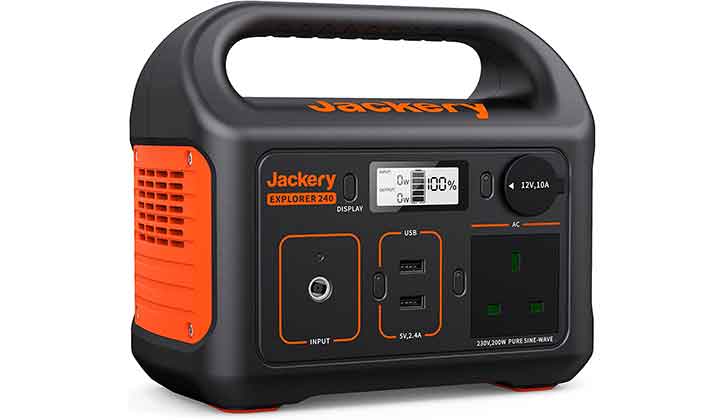
Ideally, you want to pick the lightest model of power station that you can get away with for your energy needs. And the lighter the unit, the more you are going to use it.
Portability
This is the number one reason to buy a power station – you can take power outside with you. If you work remotely on a laptop, being able to do so outside your motorhome in the sunshine, with a great view, is an appealing thought – just make sure you have one of the best camping tables so you can set up comfortably!
This works best if the unit isn’t too heavy and you can carry it in addition to all of your other work paraphernalia.
If you simply want to be able to work outside the motorhome, using a mains or 12V extension lead might work just as well, and costs less.
So, when considering a power bank, it’s all about trying to source one that offers you just enough battery power for your needs, and perhaps mating it up to a compact solar panel. While solar panels are trickle-chargers that only work really well in summer, that might be a good solution for you. After all, who wants to work outside in winter?
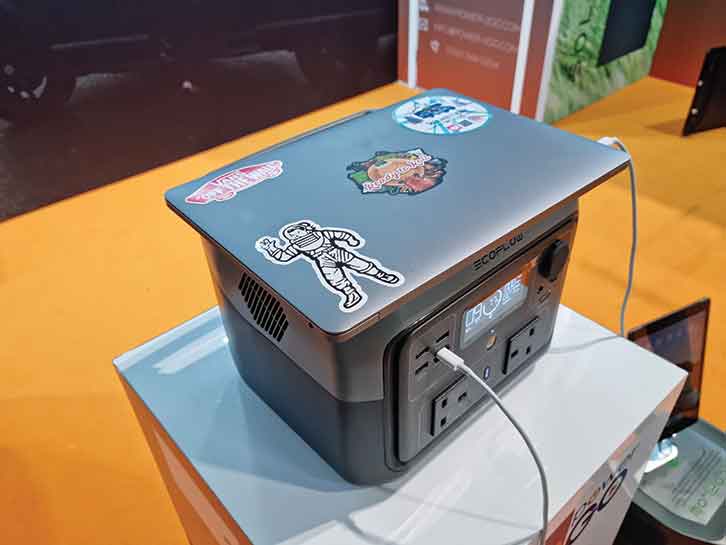
Being portable also means that if you’re thinking of buying a motorhome and sell on your current ‘van, you can transfer the power bank to your next leisure vehicle without the hassle and cost of wiring.
In addition, you will be able to have a portable power supply in a gazebo, or another vehicle, so it can be a handy item to have for other applications, too. Many people use them for Bluetooth speakers and fairy lights, for example.
Plus, a portable and charged power bank is a handy thing to keep at home, in case of power cuts.
Not keen on DIY?
The other reason to buy a power station is if you’re not competent at DIY and don’t trust yourself to safely wire in an inverter. Inverters often carry massive currents – hundreds of amps when used with high-power items such as microwaves – and you really need to know exactly what you’re doing when wiring them in place.
If you would struggle to wire up a three-pin plug, inverter wiring isn’t for you, and if you don’t want to pay a professional to install one, adding a power station is another option.
Charging power banks
All portable power stations are battery powered, so you will need to charge them up after they’ve been drained down. The charging time required will depend on the unit’s battery capacity.
To give you a rough idea of the times involved, the Totalcool Totalpower 500 (which has a 40Ah battery) takes about seven hours to charge on a 90W mains charger and around 11 hours to do so on a vehicle charge.
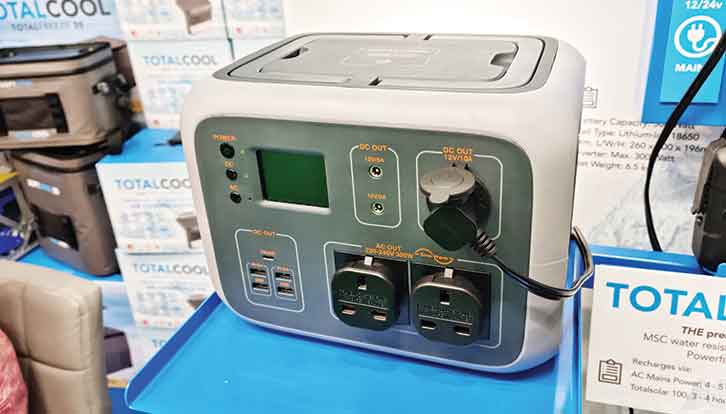
Solar takes around eight hours when using the optional £300 100W solar panel, but this assumes eight hours of full sun, which in the UK – classed as a cold climate – isn’t always assured.
On cloudy summer days, this might double – so two days to charge up via solar is possible. However, the unit can be used while it’s charging, so this could still extend your usable power.
During the winter months, all power stations will take considerably longer to recharge in the UK, so you will definitely be better off charging them from the mains supply.
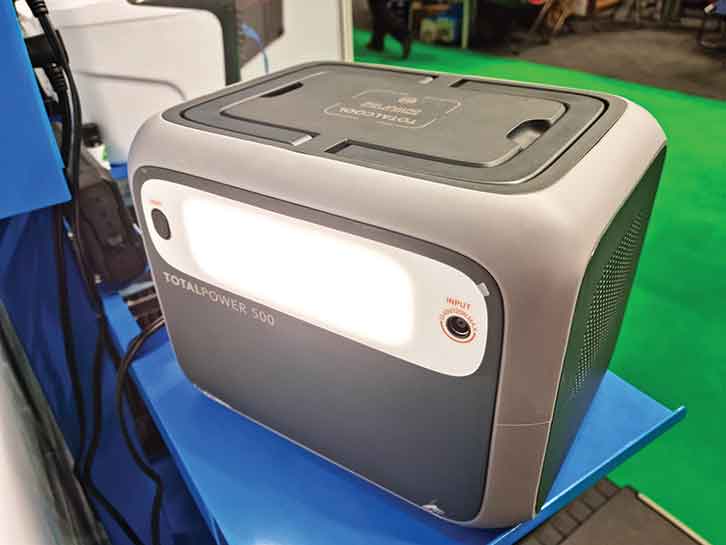
Some of the larger units – those with 60Ah batteries and above – would need several hundred watts of solar power to recharge them, even in the peak of the summer. These would take days to charge up with just a 100W solar panel, so it’s really most practical to charge them back up via the mains.
Want to find out more about Watts? We talk you through all you need to know as we answer what is a Watt?
Is it worth buying a portable power station?
Basically, there are two advantages to running a separate power supply: first, it’s portable, and second, if you are not good at DIY wiring, it avoids the risk of damaging your motorhome with bodged wiring.
The downside is that you’re paying a premium to have a battery, inverter and sockets in an attractive box with a handle. But they are a convenient way of adding power to a day ’van or part-time camper, and using solar power raises their green credentials.
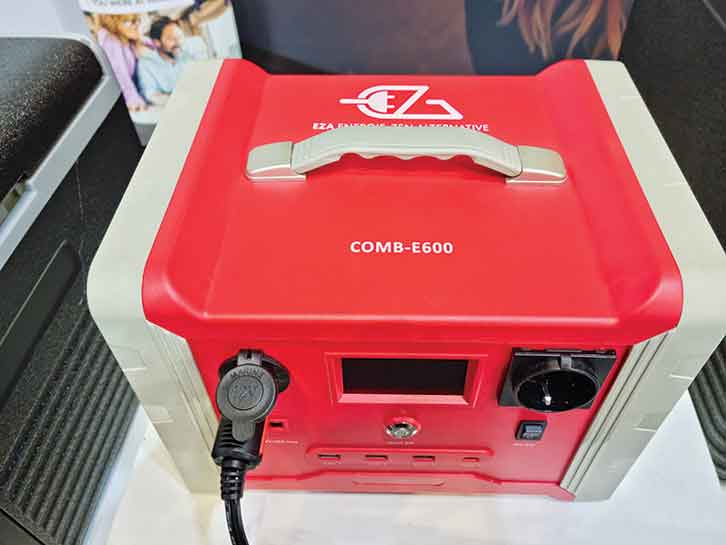
It really all depends on your needs. If you just want to extend your wild camping capability, then a more cost-effective solution is to double up your battery bank. Going from 100Ah to 200Ah instantly doubles your battery reserves and will cost quite a bit less than the price of an equivalent capacity power bank. It works 24/7 and doesn’t need the sun to be out to work (unlike just adding a solar panel).
A 100Ah battery will typically cost you around £150 for a quality brand, or around £650 for a lithium iron phosphate one. The latter is the best long-term bet, and some of the newer models come with 10-year warranties and all sorts of useful features (such as Bluetooth apps that provide you with remote voltage and charging/discharging information).
If your interest in a portable power station is to gain an inverter or some extra 12V or USB sockets, then one option is to have these items added to your motorhome directly.
As little as £10 easily buys you a 12V or USB socket online and these can be dotted around your vehicle where you need them (remembering, of course, to fuse each one – and always employing a professional to fit them if you’re in any way unsure in your abilities).
A UK-sourced inverter can cost from £40 for a 300W model, which can be wired up in less than an hour. So even if you are paying for a professional to do the job, it shouldn’t cost too much.
However, if you’re looking for a neat, portable, all-in-one pack that can recharge a variety of items no matter where you are – including at home – you could consider a power bank.
Verdict
Power banks definitely have their place in the world of leisure vehicle electricals, so long as you bear in mind that they are still quite a specialist application.
Of course, their portability is their real advantage, so it’s best to pick one you can lift outside with ease, which won’t take up a lot of room.
If you don’t need a portable unit and you simply want to have more battery capacity, then adding a second leisure battery, or swapping to lithium iron phosphate cells, would be an easier upgrade, and one which will benefit all aspects of your motorhome.
The good thing is, there is so much choice in the market – no matter what your power requirements, there will be a power bank to suit your needs.
Looking for another useful accessory to take on tour? Then check out our guide to the best dash cams for a motorhome, where we round up our top picks on the market.
Future Publishing Limited, the publisher of Practical Motorhome, provides the information in this article in good faith and makes no representation as to its completeness or accuracy. Individuals carrying out the instructions do so at their own risk and must exercise their independent judgement in determining the appropriateness of the advice to their circumstances. Individuals should take appropriate safety precautions and be aware of the risk of electrocution when dealing with electrical products. To the fullest extent permitted by law, neither Future nor its employees or agents shall have any liability in connection with the use of this information. Double check any warranty is not affected before proceeding.
If you’ve enjoyed reading this article, why not get the latest news, reviews and features delivered direct to your door or inbox every month. Take advantage of our brilliant Practical Motorhome magazine SUBSCRIBERS’ OFFER and SIGN UP TO OUR NEWSLETTER for regular weekly updates on all things motorhome related.
